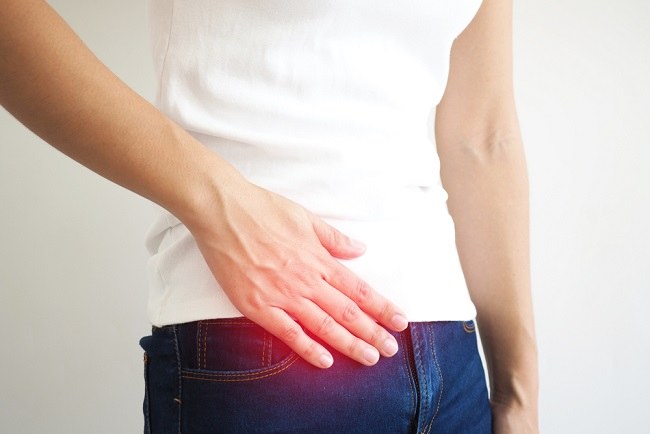Inguinal Hernia, Recognize the Symptoms and How to Treat It
The term inguinal hernia may still sound foreign. This type of hernia is characterized by the appearance of a bulge in the groin or groin. This disease needs to be treated with surgery, especially if the patient experiences severe pain or complications.
An inguinal hernia occurs when the muscles in the lower abdomen weaken. This condition can be triggered by several factors, for example often lifting heavy loads, straining too hard during bowel movements, pregnancy, chronic cough, and aging.
Weakening of the lower abdominal muscles causes tissue in the abdomen, either fatty or intestinal tissue, to protrude into the groin or groin folds. However, the bulge is intermittent and will usually appear when the patient coughs or bends.
Types of Inguinal Hernia
In general, inguinal hernias are divided into two types, namely direct and indirect inguinal hernias. Here is an explanation:Direct inguinal hernia
Inguinal hernias occur directly due to weakening of the muscles of the lower abdominal wall due to repeated pressure, either due to pushing too hard or the habit of lifting heavy weights. This makes the tissue in the stomach penetrate the muscular wall. Direct inguinal hernias are generally experienced by adults.
Indirect inguinal hernia
This type of hernia is a birth defect condition in which the tube connecting the stomach and the scrotal sac does not close completely. This channel allows the tissue in the stomach to protrude into the groin. Indirect inguinal hernias are more common in baby boys.
Various Symptoms of Inguinal Hernia
Inguinal hernias often cause intermittent symptoms, symptoms usually appear when the sufferer performs certain activities. The following are common symptoms of an inguinal hernia:
1. The bulge in the groin
A bulge in the groin area is the main symptom of an inguinal hernia. Initially, this bulge may not be noticed by the sufferer because it comes and goes. However, the bulge will appear when the patient is straining or standing and will disappear when lying down
Meanwhile, a bulge due to an inguinal hernia in infants or children is usually seen when crying or straining during bowel movements.
2. Discomfort
Over time, the bulge that appears due to an inguinal hernia can get bigger. This condition can certainly cause discomfort to sufferers because the bulge feels stuck and pressed in the groin area.
3. Pain
Inguinal hernia sufferers can experience pain. This condition usually appears when sufferers are active, such as exercising, lifting heavy loads, straining during bowel movements, coughing, and bending.
4. Burning sensation
The bulge that appears due to an inguinal hernia can also be accompanied by a burning sensation that spreads to the pelvic area, testicles, or legs.
In severe cases of inguinal hernias, the intestine can be pinched in the hole formed in the abdominal wall and damaged. This condition will cause severe pain, red bumps on the skin, vomiting, unable to pass gas, and increased heart rate.
If these signs occur, sufferers of inguinal hernias need to be immediately taken to the Emergency Room (ER) at the nearest hospital to get medical treatment.
How to Treat Inguinal Hernia
Inguinal hernias do not always cause severe and life-threatening symptoms, but this condition cannot improve by itself. Currently, the only treatment step that can be done is hernia surgery
In the case of an inguinal hernia with symptoms that are not bothersome, it usually does not require immediate surgery. However, it is recommended that sufferers continue to regularly take control of the doctor to monitor the symptoms and condition of the hernia
If over time the protrusion due to an inguinal hernia enlarges, always appears, or shows severe symptoms, there are three methods of surgery that can be performed:
Open operation
In this type of surgery, the doctor will make an incision in the area of the hernia bulge, then push abdominal tissue such as intestines or layers of fat back into position. Next, the doctor will close the hole in the abdominal wall using a synthetic mesh which will be sutured.
After surgery, hernia sufferers generally need to be hospitalized for several days in the hospital and limit strenuous activities for 4–6 weeks.
Laparoscopy
This procedure is performed by making a small incision in the navel and usually in the groin to insert an instrument called a laparoscope. This special tool is shaped like a hose that has a camera and can cut tissue.
The laparoscopic method has mild side effects, such as smaller scars and faster recovery time. However, unfortunately, this type of surgery is not always available in all health facilities and the price is quite expensive.
Robotic surgery
Robotic hernia surgery is almost the same as laparoscopic surgery. However, the difference in this procedure is that the doctor will run robotic devices during the operation.
This type of surgery has mild side effects, such as small scars and relatively faster recovery time. However, the costs required for surgery are more expensive when compared to all types of operations above.
In cases of congenital defects, inguinal hernias cannot be prevented. However, adults can reduce their risk of getting an inguinal hernia in the following ways:
- Consume high-fiber foods, such as fruits, vegetables, and whole grains, to prevent constipation and straining during bowel movements.
- Avoid lifting heavy weights too often and if you have to do it, make sure your upper body is leaning forward and your knees are bent when you start lifting heavy objects.
- Not smoking, because it can trigger a chronic cough which increases the risk of an inguinal hernia.
- Exercise regularly, especially doing movements that strengthen the abdominal muscles, for example plank or crunch
If you experience symptoms of an inguinal hernia, such as a bulge in the groin area and pain when sitting or standing, you should consult a doctor to determine the exact cause and get the right treatment.
Label : Health
Comments
Post a Comment